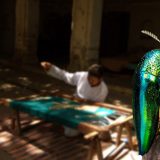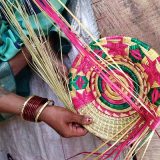सरौता ~ Nutcracker
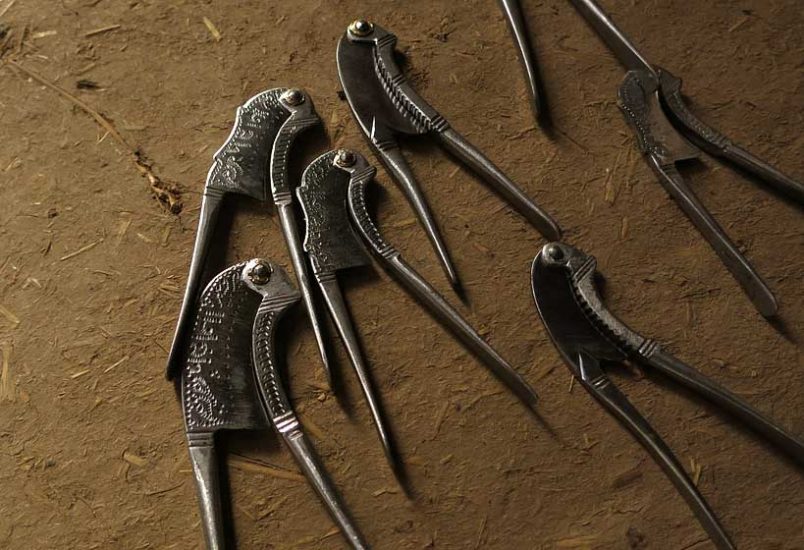
Mina’s parents watched amusedly as their child spent all morning bouncing around, excited for the first time to attend school. At exactly 9:45 am, Mina rushed out of her door, urging her parents to hurry up and take her on the 10 min walk to the museum where all the students from her grade would be gathered. While her mother fussed around with her bag, Mina’s father let her know about a bit of a mission he had for her where she would have to come back from her trip and tell him about her favourite artefact, why she liked it, and every bit of history they had learned about it. Now determined to come back home with a fascinating answer, Mina hugged her parents goodbye and joined her peers at the Raja Dinkar Kelkar Museum’s entrance.
It was nearing the end of their trip, and Mina was sullenly trailing at the back of the group, yet to have found an answer for her mission. Just then, she passed by a showcase displaying a relatively unfamiliar tool, and she gradually drifted towards it. One of the guides, Abhay, noticed the young girl’s fascination with the artefact and walked away from the bigger group to indulge in Mina’s curiosity. “Do either of your parents eat paan?” Mina tears her gaze away from the showcase to answer the guide’s question. “Usually after we eat out at some restaurant,” she answers tentatively. “So you know what supaari is?” Mina gives a steady nod. “This instrument is called betel nutcracker, which is used to break open that supaari.” Mina shifts her gaze back to the nutcracker, eyes wide with wonder, now finally having a name for the fascinating piece of metal.
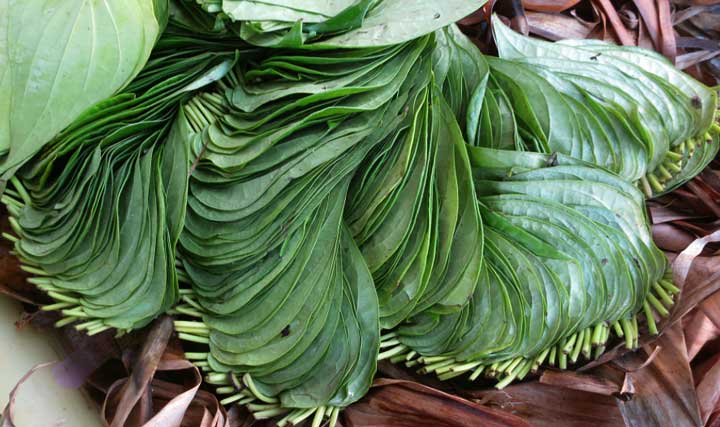
Abhay figured would it’ll be best for Mina to place the nutcracker within history to comprehend its significance. Although there were mentions of Aristotle owning a lever-type nutcracker around 330 BCE, the oldest known metal nutcracker from the third or fourth century BCE are being displayed in an Italian museum, traces of nutcracker and paan can be found in ancient Indian texts to gauge their involvement within India context. Through Srimad Bhagavatam, we learn that Lord Krishna savoured paan, through Skanda Purana we know of betel leaves emerging during the Samudra Manthana, mentions of paan and nut crackers in Ramayana and Mahabharata are brief but assertive.
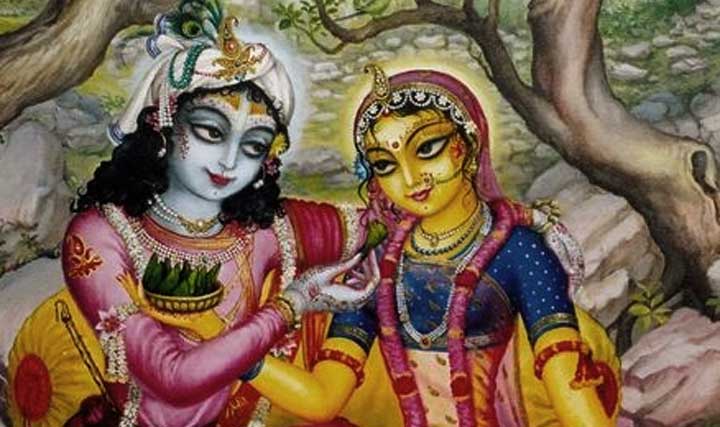
A progression of kitchen implements used by humans to work their way around their food could be studied through the evolution of the nutcracker. Once using stone tools to crack open nuts, humans made some developments in this area by inventing the nutcracker- the first of which was two pieces of wood or metal held together by a hinge, a fact that Mina found difficult to believe considering the piece of art that currently lay in front of her. As soon as nut-cracking as technology became prevalent, more complex tools were developed, which have emerged into an unlikely confluence of kitchen necessity and high art, more than a tool, it is now a cultural object.
Abhay found it challenging to explain to the young girl the drastic evolution of nutcrackers in India from an instrument of low utility, owing to the more popular soft-shelled nuts that did not require tools to crack them open, into a significant craft of Indian culture. It was, in fact, not until the popularisation of the practice of chewing betel leaf in the Vedic period that nutcrackers became a prominent kitchen implement. Abhay believed it would be fascinating for the students to learn about how an ordinary tool of domestic use had attained the status of a work of art due to its ingenious and artistic presentation. He guided Mina and a group of other students who had gained interest in this discussion into a room to take a closer look at the nutcrackers and observe their vast diversity in terms of shapes, sizes, materials, and designs.
Upon entering the room, the group dispersed into different parts of the room, forming small groups in front of various glass windows, each holding a variety of nutcrackers as well as a pluck card going into the details of that particular nutcracker. In terms of design, these nutcrackers have an affinity towards their Burmese and Srilankan varieties. Stone, bronze, silver, iron and even ivory nutcrackers were displayed beautifully, each engraved with motifs that added to its beauty and set it apart from the rest. Animals such as horses, lions, dragons and rams ; birds such as peacocks, swans, and parrots ; deities, religious symbols, humans and flowers, carved into the instrument with intricate details and care made it a fun activity for students to figure out the motifs on each of the tools. Famous for their ornate designs and flaunted as objects of utility yet also displaying personal taste and trends, these nutcrackers are an item worth collecting.
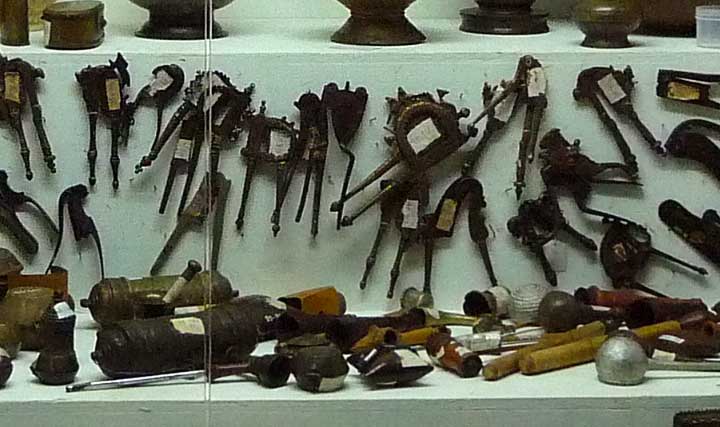
The museum had a remarkable collection of these objects, 80% of which originated in Maharashtra, while the rest were from Rajasthan, Gujarat, and Southern India. The more renowned cities for nutcrackers were Jamnagar and Anjar in Gujarat due to their gorgeous ornate designs. However, while paans and paanwalas remain prevalent, these nutcrackers have been restricted to museums and perhaps as souvenirs in homes of tasteful collectors. Paan itself is cultivated by the Tamboli, Barai, and Chaurasia communities in Bihar, particularly Hazipur and Jarua villages in Vaishali. The most sought after and expensive variety of paan; Magahi paan, is grown only in Aurangabad, Gaya, and Nalanda districts of central Bihar, and the two other types; Kakattia and Desi, are produced in Darbhanga, Samastipur, and Vaishali districts of northern Bihar, making them the prime spots of paan cultivation.
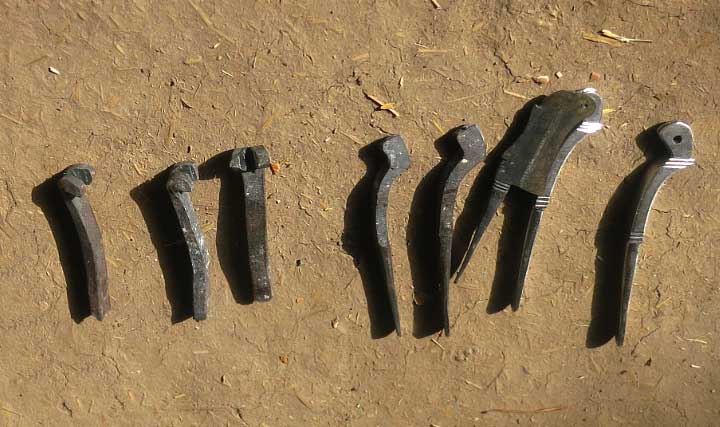
Abhay now guides the group into the screening room, having decided to display to the students a short film covering the process of making the betel nutcracker and its significance due to their keen interest in the instrument. Mina rushes towards the seats and plops down on the one closest to the screen. The lights dim, and the film begins to transport students to this set up of a few artisans in sarangpur, Madhya Pradesh, who are making nutcrackers they were so fascinated by. The students watch wide-eyed as a pair of metal-smiths forge a piece of metal and file the head into an L-shape, one of them controlling the forge while holding the article while the other strikes at it with a sledgehammer.
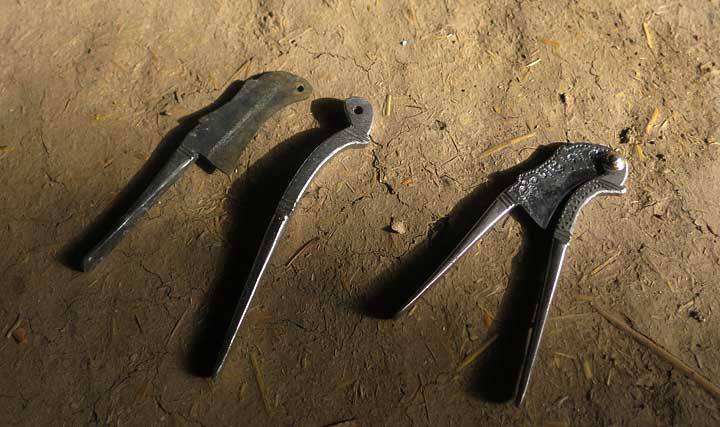
The two then give shape to a specific part of the metal by lightly striking it with a much smaller hammer. This article is then ground, polished, assembled, and engraved to make the nutcracker revered as a utility and cultural instrument. As a final product, the engraving that is considered intricate has a lot of work behind the scenes the students come to realize through the course of the film. Using a chisel on a blade to make depressions into the forged metal, later filled in with hot tar to serve as a hard core, the conventional decorative motifs that provide character to the nutcracker are incised, making it an item of fancy for those who enjoy the palate-cleansing paan.
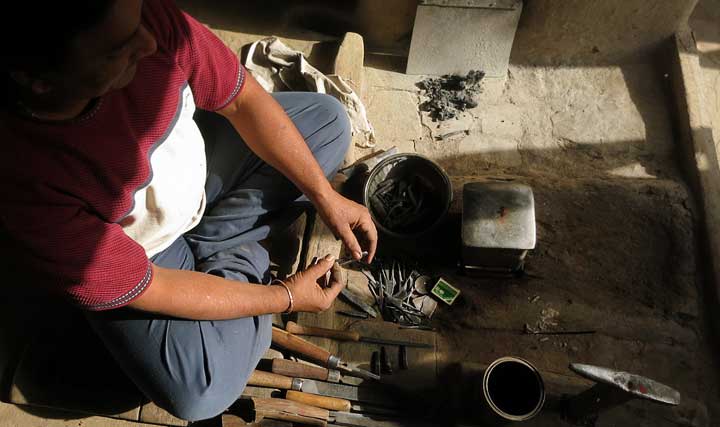
The film progresses nutcracker making from the metal-smiths at work to a roadside stall where a paanwala is preparing his ingredients for a day of making paan. He reveals an elegant nutcracker from an ornate box, a precious antique passed down to him by his father. He uses this hinged instrument to slice the betel nut, the chopped pieces are then wrapped in a betel leaf with lime, gulkand, tobacco and other spices of choice. A group of men, regulars at this stall, are on their way to work and the paanwala presents them with their paan that he had prepared and kept aside. They place their respective quid in the mouth between the gums and go on their way to work. With the exit of the customers, the film comes to an end as well.
Abhay walks to the front of the screening room, pleasantly surprised to see most of the students watching him with rapt attention. He tells the students of the way the nutcracker plays a significant role in many facets of life, such as entertainment, marriage, rituals, pleasure, sentiment and decorations. He also tells them about the different museums with their own remarkable collections of nutcrackers; such as the Sanskriti Museum of Everyday Art and Amsterdam Pipe Museum, which the students can explore through their online exhibits and learn the different types of nutcrackers within their collection and their history. Considering his young audience, Abhay decides against letting them know of the critical function of nutcrackers in certain Indian marriages and postnuptial rituals. Upon first learning about it, he had read extensively about the exchange of betel nuts and betel leaves as auspicious symbols of friendly and familiar social intercourse, hospitality and moral, social and legal commitment. Using a nutcracker to crack open betel nuts and the exchange of these chopped-up pieces is a tradition that occurs in many variations transcending across different folklores, art, rituals, ceremonies of daily life in multiple countries.
According to the Hindu ordinance, brazen vessels have been used for domestic and sacrificial purposes for centuries. A rather old yet prevalent custom would be presenting the bride with kitchen utensils of artistic excellence compared to the regular pots and pans. Since ancient times, along with the exchange of these antique vessels, betel nuts and leaves have also held immense significance in wedding ceremonies, for instance, in the Assamese and Malayan weddings. The depth of betel leaves within Indian culture can be assessed mainly through Bengali weddings, where two betel leaves cover the face of the bride are removed only during the Shubha Drishti ritual and in Maharashtrian weddings where the groom holds a betel quid in his mouth and invites the bride to take a bite from it.

In Hindu culture, every offering to God is made complete with betel leaves and nuts since they symbolize prosperity and freshness. In all religious, social and cultural functions, the betel quid is served to guests after the meal, making it more than a palate cleanser and an essential cultural item. Abhay breaks out of his daze and helps the chaperones usher the students towards the exit where the parents had already gathered to pick up their children. It was safe to say this field trip had been a pleasant experience for both Abhay and the group of students, particularly Mina. Abhay was delighted to impart his knowledge on what he considered an instrument of significance in Indian culture to budding students. Mina, as well, was captivated by the entire encounter and was buzzing to rush back home and tell her parents of everything she had learned the whole day.

